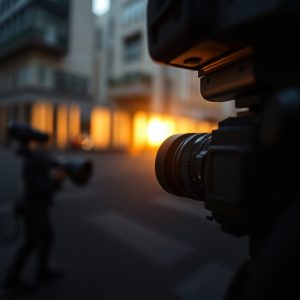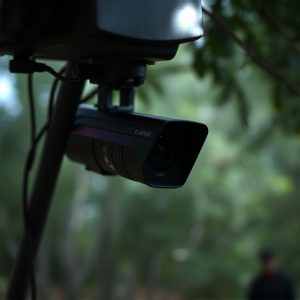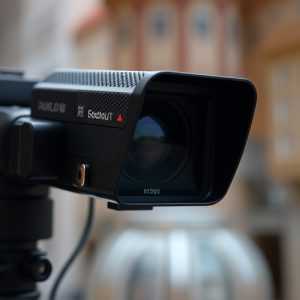Counter Surveillance Guide: Detecting Hidden Cameras & Ethical Home Monitoring
In today's digital age, detecting hidden cameras for home monitoring is vital for professionals…….
In today's digital age, detecting hidden cameras for home monitoring is vital for professionals ensuring privacy and security. They employ advanced technologies like thermal imaging, UV lights, and RF detectors to uncover heat signatures, reflective surfaces, and wireless signals. Physical inspections with signal jammers, coupled with legal considerations regarding consent and transparency, ensure effective yet ethical counter surveillance practices while protecting homeowners' rights in domestic settings.
“Uncover the art of counter surveillance with our comprehensive guide, designed for professionals seeking to master the intricate world of hidden cameras. From understanding the fundamentals of detection to exploring advanced tools and techniques, this article equips you with knowledge for effective sweeps.
We delve into ethical and legal aspects of home monitoring, ensuring a balanced approach. Learn how to navigate the boundaries surrounding hidden cameras while harnessing their potential as professional surveillance tools. Unveil the secrets to successful counter surveillance tactics.”
- Understanding Counter Surveillance: The Basics of Detection
- Professional Tools and Techniques for Sweeps
- Ethical Considerations and Legal Boundaries in Home Monitoring with Hidden Cameras
Understanding Counter Surveillance: The Basics of Detection
In the realm of counter surveillance, understanding the basics of detection is paramount for professionals navigating today’s digital landscape. With the proliferation of advanced technology, hidden cameras for home monitoring have become increasingly sophisticated, making them harder to detect. From miniature devices that can fit in a pinhole to more sophisticated setups disguised as everyday objects, these surveillance tools are often imperceptible to the naked eye. Professionals must stay ahead by acquiring expertise in identifying such devices, utilizing advanced equipment and techniques to sweep for hidden cameras, ensuring every nook and cranny is meticulously examined.
The process of detection involves a multi-step approach that includes visual inspection, infrared technology, and signal interference checks. Visual scanning is the initial step, where professionals look for any unusual fixtures or discrepancies in the environment. Infrared cameras come into play next, as they can reveal heat signatures that might indicate the presence of hidden devices. Signal interference techniques are employed to detect any electronic signals emanating from covert cameras, helping to uncover devices that may be transmitting data secretly. By combining these methods, counter surveillance specialists can effectively mitigate the risks posed by hidden cameras for home monitoring, ensuring safety and privacy in various settings.
Professional Tools and Techniques for Sweeps
In the realm of counter surveillance, professionals employ a range of advanced tools and techniques to conduct comprehensive sweeps. One critical aspect involves detecting hidden cameras for home monitoring, which have become increasingly sophisticated. Expert teams utilize specialized equipment such as thermal imaging cameras, UV lights, and radio frequency (RF) detectors to uncover these concealed devices. Thermal imaging technology, for instance, can reveal heat signatures from cameras, while UV light may detect reflective surfaces that indicate the presence of hidden lenses. RF detectors play a pivotal role in identifying wireless signals emitted by surveillance equipment.
Additionally, professionals employ physical inspections and signal interference methods. Skilled investigators physically scrutinize areas where hidden cameras are likely to be placed, paying close attention to gaps in walls, ceilings, and furniture. They may also use signal jammers temporarily to disrupt electronic surveillance devices, providing a safe window for inspection. These professional methods ensure that even the most advanced and discreet hidden cameras for home monitoring are detected and neutralized during counter surveillance sweeps.
Ethical Considerations and Legal Boundaries in Home Monitoring with Hidden Cameras
When employing hidden cameras for home monitoring, professionals must navigate a delicate balance between effective surveillance and ethical boundaries. The use of such devices raises significant privacy concerns, especially within domestic settings. It is crucial to respect the legal rights and expectations of homeowners while ensuring comprehensive security measures.
Legalities surrounding hidden cameras vary across jurisdictions, but general principles emphasize consent, transparency, and proportionality. Homeowners should be made aware of the presence of surveillance systems to avoid any breach of privacy. Additionally, the data collected must be handled securely and in compliance with relevant data protection regulations. Ethical deployment of hidden cameras for home monitoring involves a mindful approach that considers individual freedoms and the broader societal impact.
In conclusion, a comprehensive understanding of counter surveillance techniques is essential for professionals employing hidden cameras for home monitoring. By mastering detection methods and ethical boundaries, individuals can ensure privacy while leveraging technology for safety. Utilizing advanced tools and staying within legal frameworks empowers responsible home monitoring practices, fostering both security and trust.


